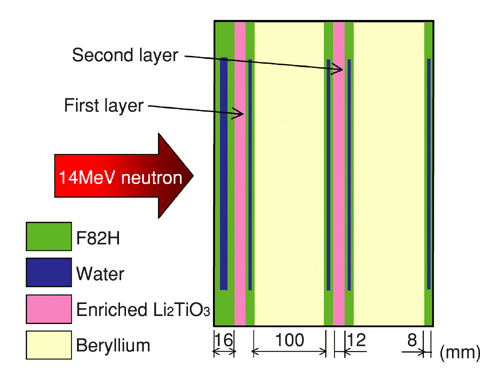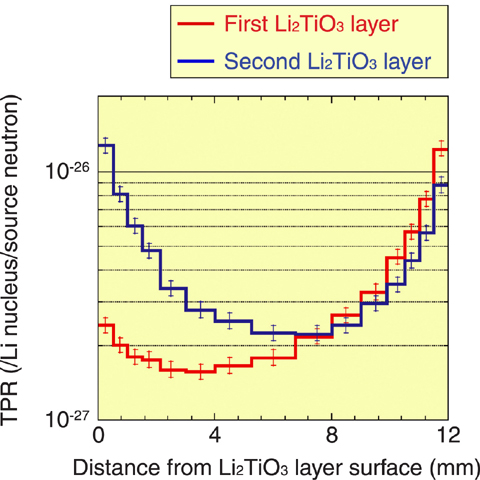
Fig.3-18 Neutronics experiment with multi-layered blanket mockup

Fig.3-19 Measured TPR distributions
Tritium Breeding Ratio (TBR) is defined as a ratio of the tritium produced by nuclear reaction between neutron and lithium in a blanket to that consumed by the DT reaction in a fusion reactor. Future fusion blankets are required to supply tritium as a fuel by themselves. Therefore we pursued development of a blanket with TBR of more than unity.
The TBR has been estimated by numerical calculations such as a Monte Carlo method for the blanket design, but the accuracy of these calculations has not been fully investigated for complicated blanket configurations so far. In order to solve this issue, 14 MeV neutron irradiation experiments have been conducted with partial mockups of the fusion blanket using the Fusion Neutronic Source (FNS) facility at JAEA, and we have performed neutronics studies to validate the calculation accuracy of TBR.
In the blanket, small enriched tritium breeder (Li2TiO3) pebbles 1 mm in diameter were packed in a breeder layer 12-15 mm in thickness. It is expected that tritium production rates (TPRs) change by more than one order of magnitude in the breeder layer. The TPR refers to tritium production from one lithium nucleus and one source neutron generated by the DT reaction. In order to measure this sharp change of the TPR, we developed two kinds of TPR detectors in this study. One is an enriched breeder pellet detector, and different thick pellets are applied corresponding to the change of the TPR. The other is a very thin bed of small breeder pebbles serving as detectors. In order to model the blanket, we constructed a multi-layered slab configuration mockup composed of heat-resistant structure (F82H), coolant (water), breeder (enriched Li2TiO3), neutron multiplier (beryllium), and a pebble bed mockup composed of F82H, beryllium and small breeder pebbles. Fig.3-18 shows the multi-layered mockup. We put the enriched pellet detectors and the pebble bed detectors in these mockups, and irradiated the mockups with 14 MeV neutrons. For the first time, we successfully measured a detailed distribution of the TPR in a blanket mockup (Fig.3-19). We have established a data base for the accurate prediction of the TPR distribution.
In addition, we studied design calculation uncertainty of the TBR based on these experimental results. We proposed new calculation method for the pebble bed layer. In the previous blanket design for the pebble bed layer, we mixed pebbles and voids homogeneously, and performed calculations using this geometry. In this study, we modeled each pebble and void accurately with a hexagonal close-packed heterogeneous geometry for the pebble bed layer used in our experimental analysis. As a result, we got indications that calculations with our TBR design have uncertainty of less than 10%, and so made great progress in the development of the fusion reactor blanket.